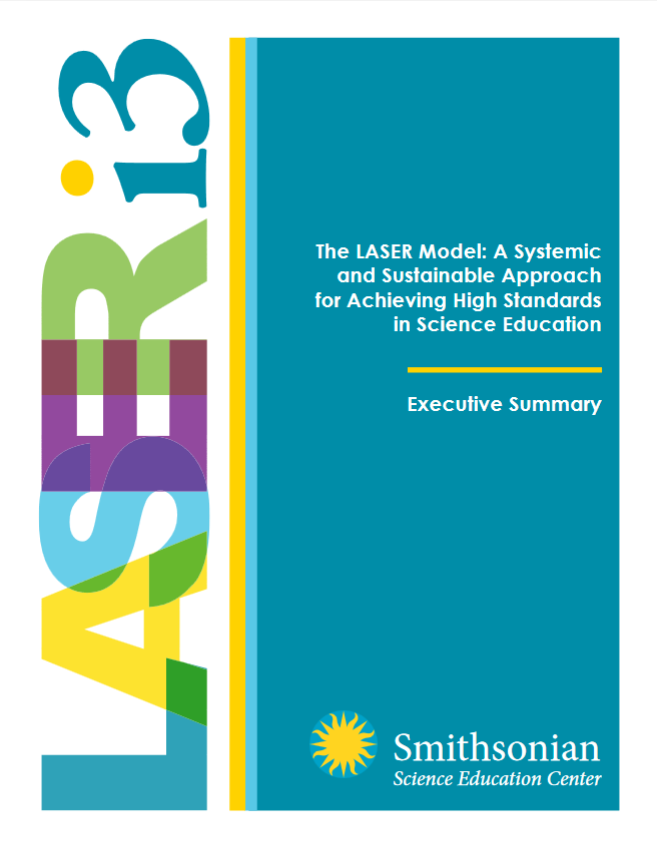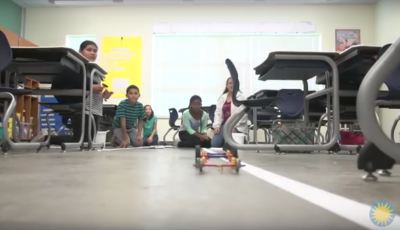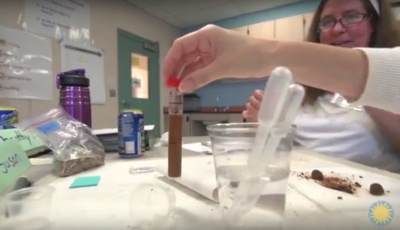LASER i3
In 2015 and 2017, researchers published the findings from a 5-year U.S. Department of Education Investing in Innovation (i3) validation study to evaluate the LASER model’s efficacy in systemically transforming science education.
Also available in Español
LASER i3 Key Findings
The third-party evaluation was conducted by the Center for Research in Educational Policy (CREP) at the University of Memphis, and followed students in grades 1-8 at schools implementing the Smithsonian Science Education Center’s (SSEC’s) Leadership and Assistance for Science Education Reform (LASER) model using SSEC’s inquiry-based science program Science and Technology Concepts™ (STC). Highlights of the evaluation include:
1. LASER students showed statistically significant gains on the Partnership for the Assessment of Standards-Based Science (PASS) performance assessment relative to the comparison group. These gains indicate students are able to apply what they have learned to novel hands-on tasks.
2. The effects were particularly high for subgroups of students who are most in need. When the data are disaggregated, statistically significant gains in science are also seen by LASER students identified as English language learners (ELL), students with individualized education programs (IEPs), or students participating in free or reduced price lunch (FRL) relative to the comparison group.
3. LASER elementary and middle school students also demonstrated positive gains in subject areas other than science as measured by standardized state tests. In the Houston Independent School District for example, LASER middle school students outperformed their peers with statistical significance in both math and reading.
4. After receiving three Science and Technology Concepts™ units and accompanying professional development (PD) by the SSEC, 64.7% of LASER teachers reported feeling “well prepared” or “very well prepared” to teach inquiry-based science relative to only 44% of teachers at comparison schools receiving PD as usual.

So what is LASER i3?
“LASER i3” refers to a study conducted by evaluators from the Center for Research in Educational Policy (CREP) at the University of Memphis on student performance at schools implementing the LASER model (Fig. 1). Over three years CREP studied approximately 60,000 students and assessed the impact of the SSEC’s products and services on a subsample of more than 9,000 elementary and middle school students in (1) the Houston Independent School District (HISD), (2) eight school districts in northern New Mexico, and (3) seven school districts in North Carolina. They found that the inquiry-based science promoted by the LASER model improved achievement not only in science, but also in reading and math. LASER plays a critical role in bolstering student learning, especially among underserved populations including children who are economically disadvantaged, require special education, or are English language learners.


Fig. 1 The SSEC’s LASER model describes five elements, which when planned around a shared vision for science, form the infrastructure to sustain student-centered learning and teaching.
What did we learn about LASER student outcomes?
The LASER i3 study resulted in many statistically significant and educationally meaningful improvements in achievement in science as well as in reading and mathematics. To compare students across all three regions, schools administered the Partnership for the Assessment of Standards-Based Science (PASS). The strongest gains by LASER students relative to the comparison group were seen in hands-on performance tasks. These gains are particularly noteworthy as they indicate students are able to apply what they have learned in science to hands-on tasks, just as professional scientists apply their expertise to conduct investigations and solve problems.
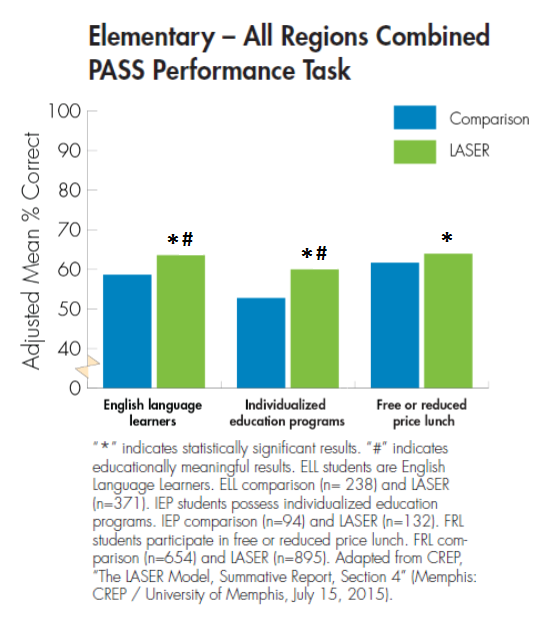
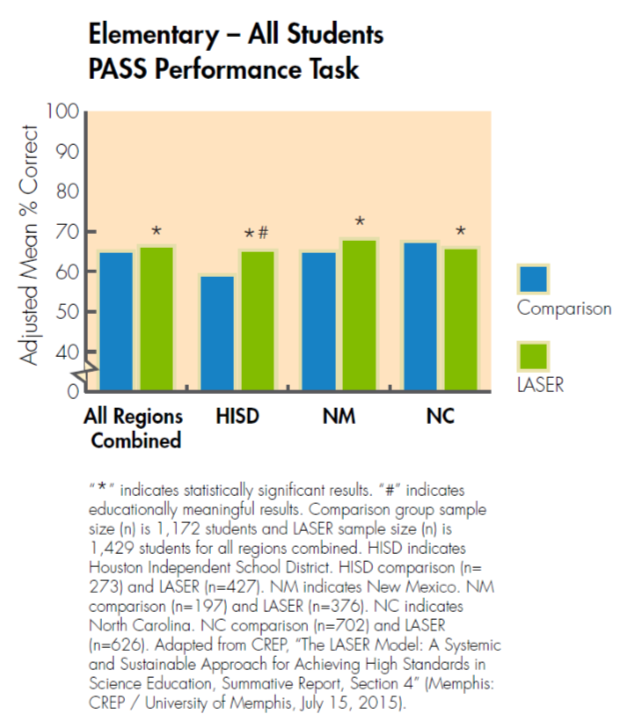
“Statistical significance” refers to the likelihood that an outcome can be attributed to a specific cause (i.e., improved student achievement due to the LASER model). “Educationally meaningful” signifies the magnitude of difference between two measures (i.e., the LASER and comparison groups) has practical significance.
LASER i3 Videos
How did teacher practice change as a result of LASER?
Participating LASER teachers at grades 1–8 received a Science and Technology Concepts (STC™) unit each year for three years. This curriculum was accompanied by another integral part of the LASER model: professional development (PD). Teachers received two trainings in each unit to practice pedagogical strategies and gain deeper content knowledge for successful implementation. LASER teachers found these ongoing PD opportunities useful to improve their own knowledge and skills as well as preparing them to implement the curriculum. In 2014, evaluators asked teachers, “How useful to your science instruction was the professional development you received last year?” Of LASER teachers receiving the SSEC’s PD, 67.6% found it “very useful” while only 23.1 % of teachers in the comparison group said the same of their school district’s PD.

A North Carolina LASER teacher examines a specimen at professional development training in the STC™ unit The Life Cycle of Butterflies.
What does the future hold for LASER i3?
The LASER i3 study demonstrates that inquiry science improves student achievement not only in science but also in reading and math for students of all abilities at elementary and middle school. We know inquiry science programs supported by the LASER model play a critical role in bolstering student learning in science, reading, and math among all students and especially among English language learners, the economically disadvantaged, and students receiving special education. Students are learning science and loving it, thanks to the legacy of LASER i3 and the LASER model’s five elements: a research based-inquiry-centered curriculum; differentiated professional development; administrative and community support; materials support; and state and local assessments to measure the impact on student learning. Armed with this validation, the SSEC will continue its efforts to transform science education and support the LASER i3 regions as they sustain and scale the great work that has already been done.
_____________________________________________________________________________________________
To read more from our independent evaluator, choose a link below:
Alberg, M. (2015). The LASER Model: A Systemic and Sustainable Approach for Achieving High Standards in Science Education, Summative Report. Memphis, TN: The University of Memphis, Center for Research in Educational Policy.
Section 1: Executive Summary
Secton 2: Overview
Section 3: PASS Multiple Choice
Section 4: PASS Open-Ended
Section 5: Student Attitudes
Section 6: State Assessments
Section 7: Case Studies
This work was completed under a validation grant (U396B100097) awarded to the Smithsonian Science Education Center (SSEC), formerly the National Science Resources Center, by the U.S. Department of Education through the Investing in Innovation (i3) program. Matching private sector funding for the SSEC LASER i3 study was contributed by Los Alamos National Laboratory Foundation, Shell Oil Company, JP Morgan - National Philanthropic Trust, Golden Leaf Foundation, North Carolina GlaxoSmithKline, Carolina Biological Supply Company, Rural School & Community Trust, Noyce Foundation, DuPont, AT&T, Intel Foundation, and Teresa Bergeson.
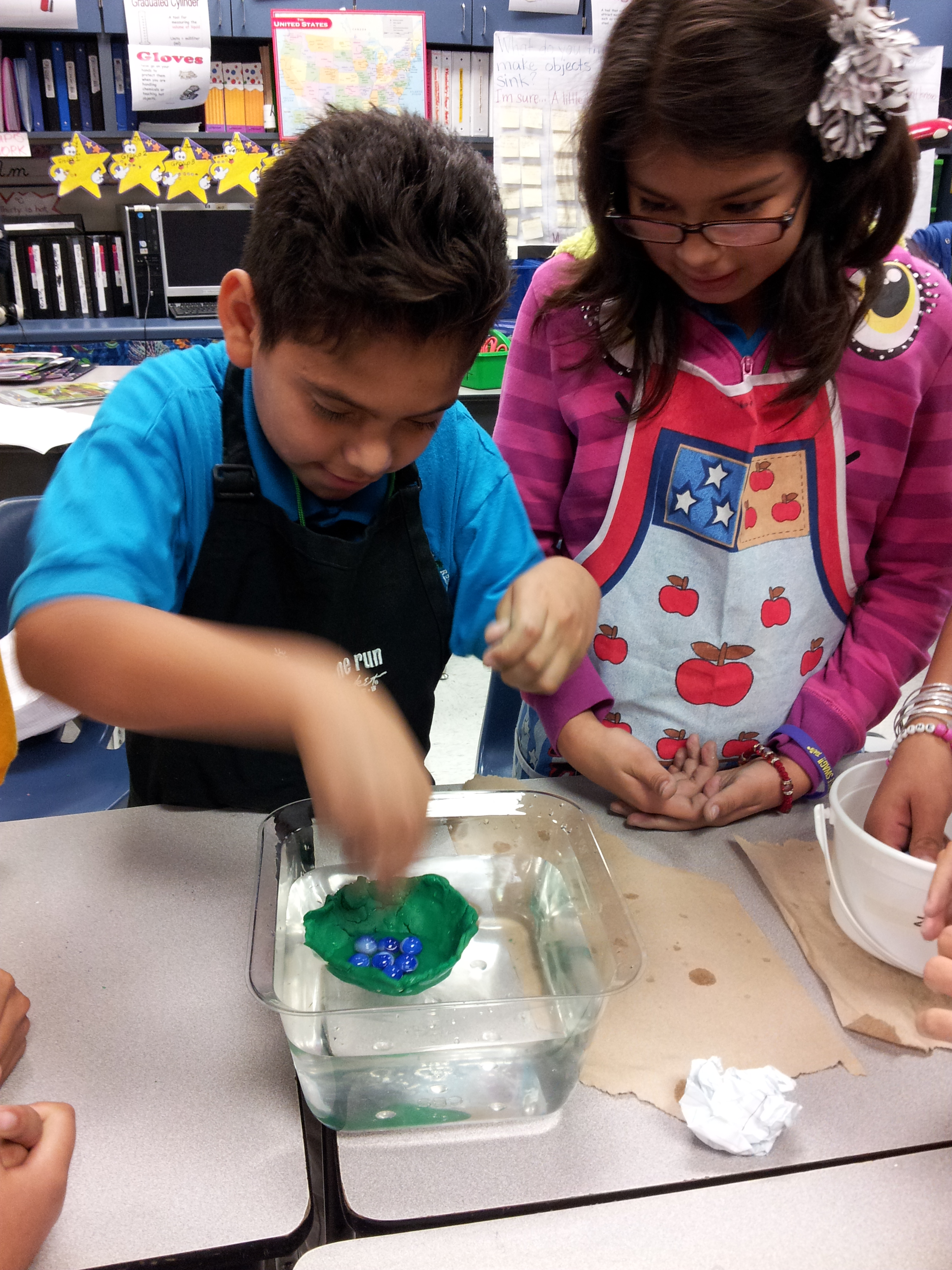
Students engage in a design challenge assessing their understanding of density and buoyancy from the SSEC's Floating and Sinking unit.
